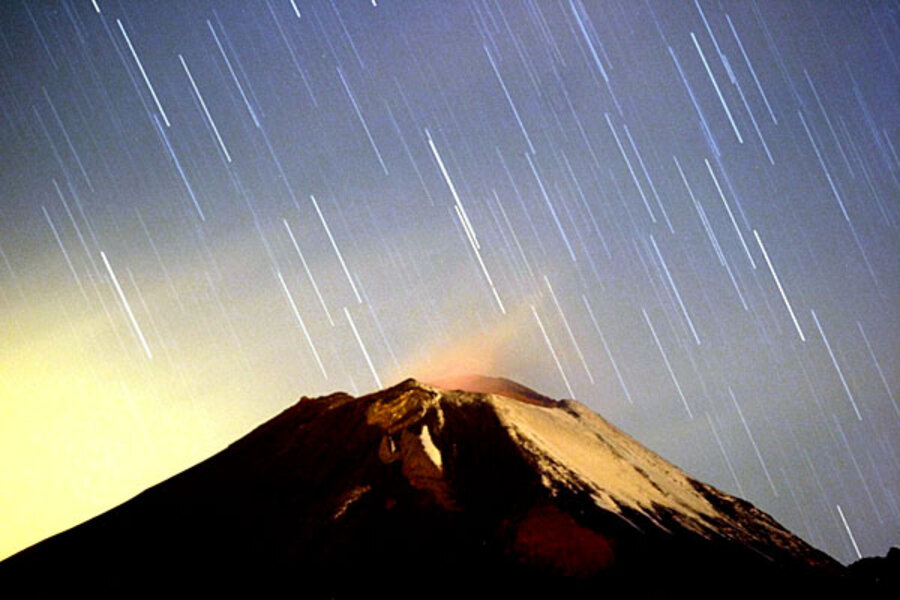Geminid meteor shower: why spectacular light show puzzles scientists
Loading...
Roll up, roll up for the mystery (meteor) shower: the Geminids.
By now you've probably heard that tonight's the night for what is arguably one of the most spectacular meteor showers of the year, the Geminids.
The shower earns its name from its apparent point of origin, or radiant, in the constellation Gemini.
But where many meteor showers represent Earth's encounter with dust from a comet, the Geminids appear to have an odd duck of a source: an asteroid that some now call a rock comet.
And it's not clear from recent observations whether the object, known as 3200 Phaethon, is kicking off enough material to account for the intensity of the meteor shower Earth encounters.
A team of astronomers identified the debris gap in a paper published in the Astronomical Journal in November 2010. And researchers are still puzzling over it.
Although the first recorded observations of the Geminids don't appear until the early 1860s, modeling studies of the debris' orbit suggests that the stream is anywhere from 200 to 6,000 years old.
3200 Phaethon was discovered by NASA's Infrared Astronomical Satellite in 1983. Once scientists determined its orbit, the orbit closely matched with the orbit of the debris stream.
One of the asteroid's key features is its proximity to the sun at closest approach. It comes nearer the sun than any known asteroid, well inside the orbit of Mercury. This allows surface temperatures to reach 1,400 degrees Fahrenheit.
In their 2010 paper, David Jewitt and Jing Li at the University of California at Los Angeles looked at images from one of a pair of NASA sun-watching satellites taken of 3200 Phaethon during its close approach to the sun. Its brightness increased suddenly, indicating that it was shedding material, just as a comet might.
Given the asteroid's rocky makeup, the team posited that the object's relatively quick swing into and out of this hot zone leads to rock fracturing when heated. Comets, on the other hand, shed material when the ices they contain heat and shift directly from solid to gas. In the process, a comet also ejects dust and rock bound up with the ices.
To account for the intensity of the Geminid stream, the duo calculated, the 30-mile-wide 3200 Phaethon would have to repeat the shedding process 10 times per orbit, something no one has observed.
Dr. Jewitt allows in an e-mail exchange that their mass estimate could be off, and that additional outbursts during each orbit could emerge with more-systematic observations.
But for now, the grit gap remains.
So, bundle up, grab a chaise lounge, a Thermos of hot chocolate, and head out to see the show overnight tonight or even Wednesday night. The peak actually is expected to occur at about 2 p.m. Eastern Standard Time Wednesday.
But the shower, which typically produces more than 100 meteors an hour during its peak under dark skies, will be a bit less spectacular than it otherwise might be. Blame the bright, if waning, moon. Moonlight will wash out the dimmer meteor streaks.





